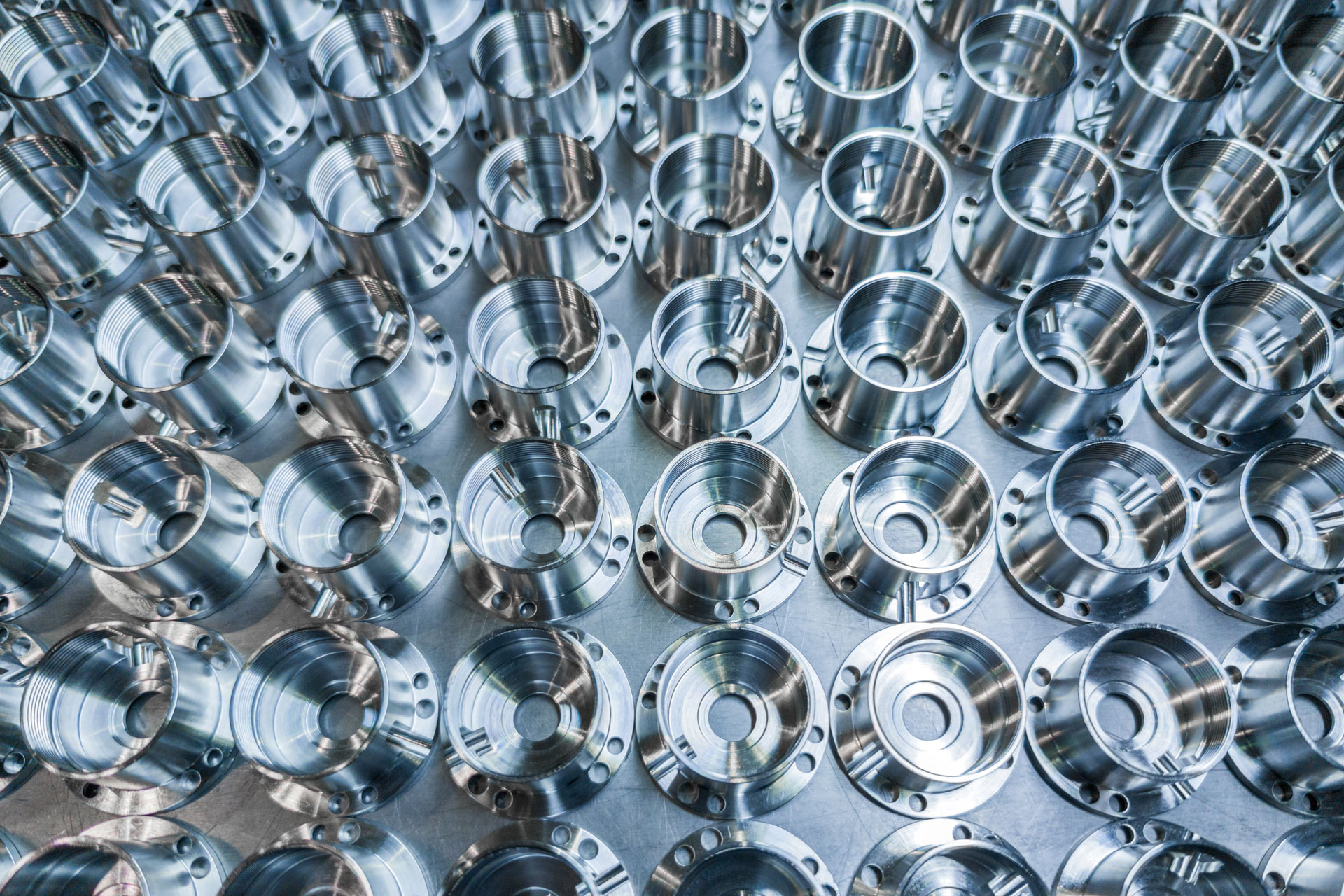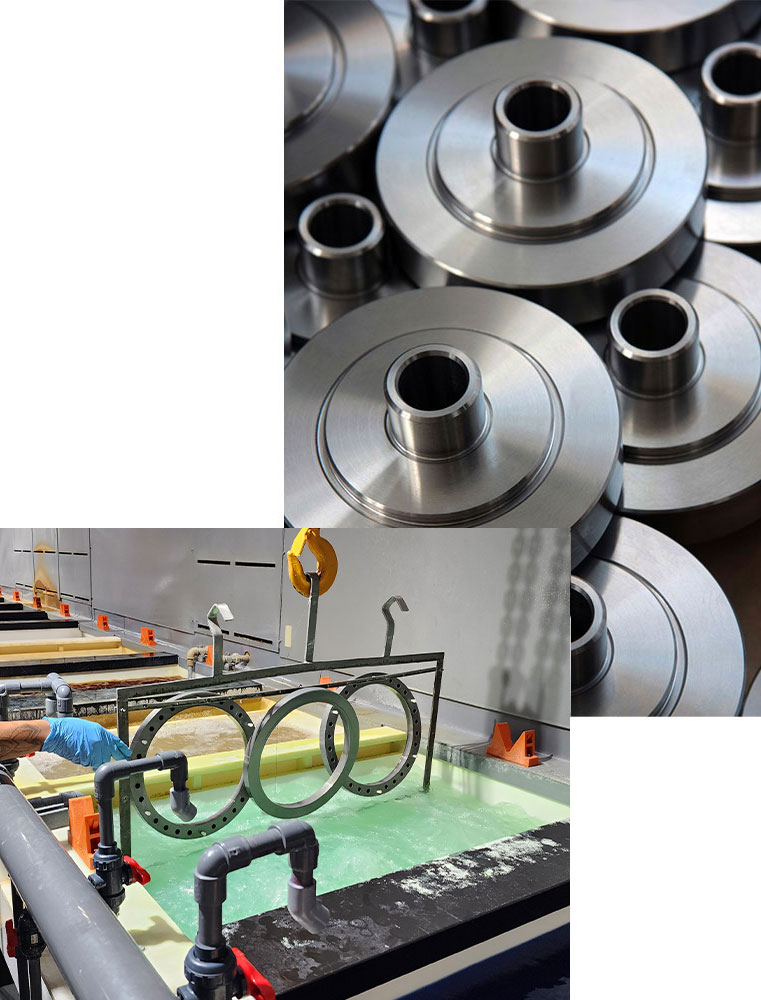ELECTROLESS NICKEL

ELECTROLESS NICKEL PLATING IS THE CHOICE FOR COATING CORROSION PRONE MATERIALS
Electroless Nickel plating creates a thin, uniform coating that offers superior protection against oxidation, along with moderate abrasion resistance properties.
ELECTROLESS NICKEL PLATING BENEFITS
Electroless nickel plating has advantages which encompass a wide range of applications.
- Application possible up to .003” thickness.
- Outstanding protection against oxidation.
- Moderate abrasion-resistance properties.
- Coverage in the deepest details.
High Phosphorus Electroless Nickel works best for Applications in highly corrosive or acidic environments, such as oil and gas extraction or chemical processing.
- Superior Corrosion Resistance
- Non-Magnetic
- Lower Hardness
Mid Phosphorus Electroless Nickel is better solution for applications needing a good balance of durability and protection, where extreme conditions are not the primary concern.
- Balanced Hardness and Corrosion Resistance
- Slightly Magnetic
- Increased Wear Resistance

LOW-FRICTION COATINGS
Do you have parts prone to getting rubbed the wrong way? Solve your abrasion and wear problems with our abrasion-resistant coatings.
ABRASION-RESISTANT COATINGS
Are release issues causing downtime in your shop? Reduce friction and achieve uniform treatment with our lubricity and release/low-friction coatings.
ELECTROLESS NICKEL PLATING FAQS
Explore how Electroless Nickel compares to standard nickel plating. You’ll learn what makes it ideal for metal components, its benefits for various industries, and how it’s able to resist corrosion so effectively.
How does Electroless Nickel plating compare to standard nickel plating?
Electroless Nickel plating stands out for its ability to coat parts evenly without the need for an electrical current, whereas standard nickel plating relies on electrical conductivity. It creates a thin, uniform layer that enhances corrosion resistance and durability for shapes from simple to complex.
Why choose Electroless Nickel plating for metal components?
Electroless Nickel is ideal for metal components because of its superior corrosion and wear resistance. Thanks to a uniform coating, it reduces friction and withstands the elements of harsh applications, including aerospace and automotive.
Can Electroless Nickel plating prevent rust effectively?
Electroless Nickel significantly reduces the risk of rust because of its exceptional corrosion resistance, especially in saline and alkaline conditions. While no coating is completely infallible, Electroless Nickel is among the most effective options for protecting metal components against corrosion.
ELECTROLESS NICKEL PLATING PERFORMANCE LEVELS
High Phosphorus Electroless Nickel offers superior corrosion resistance and is non magnetic, making it ideal for acidic or corrosive environments, though it has a lower hardness. The Mid Phosphorus Electroless Nickel provides a better balance of hardness and corrosion resistance, is more wear-resistant and slightly magnetic. Your best choice depends on whether the application prioritizes extreme corrosion protection or a balance of wear resistance and durability.

45 HIGH
54 MID
ROCKWELL HARDNESS

10.5-12.0% HIGH
5-9% MID
Phosphorus (wt)

1.0 mil deposit, 1,000+ hours HIGH
1.0 mil deposit, 100 hours MID
Corrosion Properties

1400°F
MAX OPERATING TEMPERATURE

cal/cm/sec/C 0.0105
Thermal Conductivity
CASE STUDY: Electroless Nickel Protects Aluminum Molds
Food manufacturers often use aluminum for components because it’s soft, lightweight, and easily shaped. But these same properties put aluminum parts at risk for damage. The Bales team was eager to help AM better protect its molds. Our recommendation? Electroless Nickel, an FDA-approved coating.
“Bales helped me meet demanding deadlines with a quick turnaround and went above and beyond to keep our products safe.”
Joseph Sadzewicz, Parts Manager at AM Manufacturing Company

